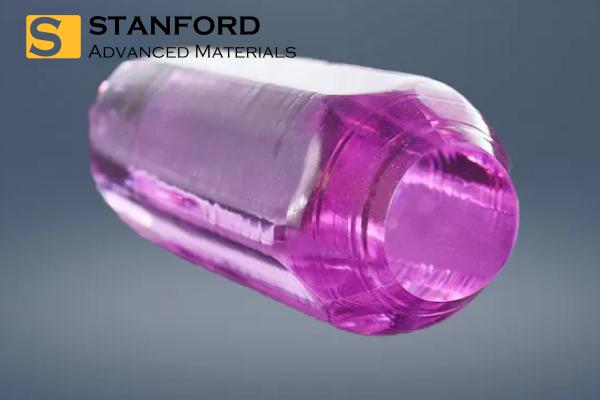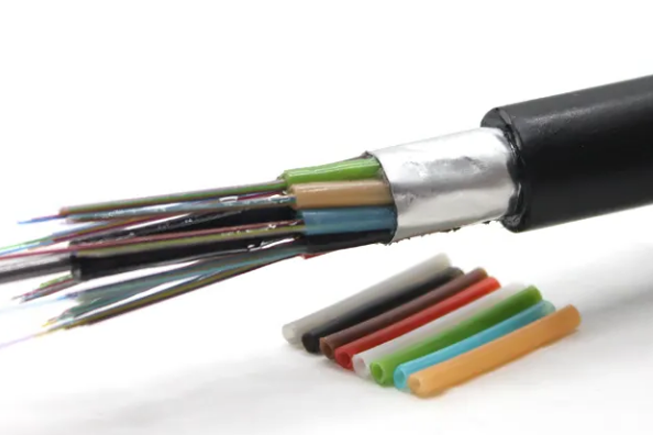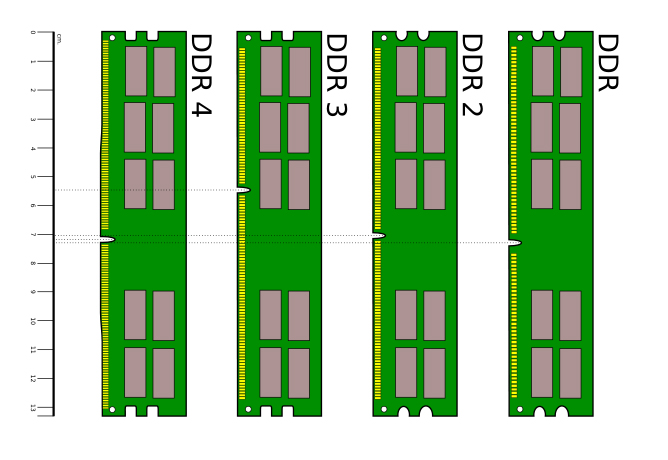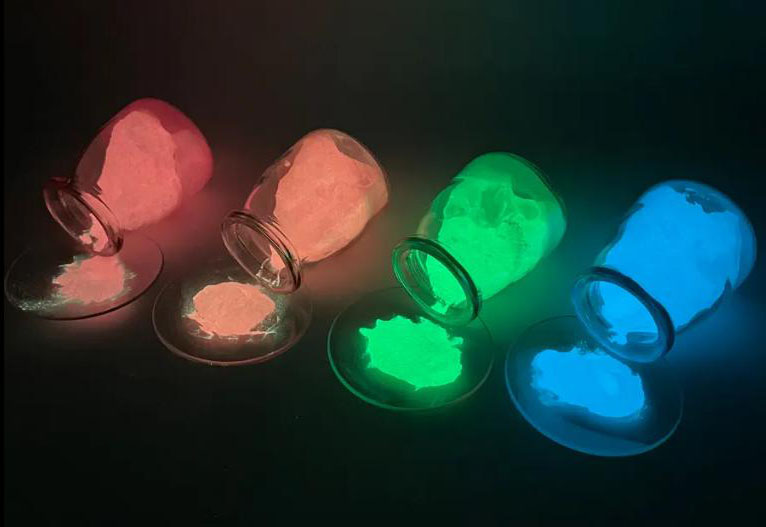
The Science Behind Phosphor Light Emission
1. Introduction
Phosphorescence is a fascinating phenomenon involving light emission from a material after it absorbs energy. Unlike fluorescence, which results in almost immediate light emission, phosphorescence is characterized by a delayed light release. This delayed glow occurs because of the time it takes for electrons in the material to transition from an excited state back to their ground state. Phosphorescent materials have many practical applications, including in safety lighting, display technology, and even art.
The history of phosphorescence dates back to ancient times, with early reports of glow-in-the-dark materials being found in natural minerals. Over time, advancements in materials science have led to the discovery of a variety of inorganic and organic substances capable of phosphorescence. These materials are now integral in fields ranging from consumer electronics to emergency safety systems.
2. Working Principle of Phosphorescence
Phosphorescence begins with the absorption of energy, usually light. This energy excites the electrons in the material, pushing them from a low-energy state (ground state) to a higher-energy state (excited state). Upon absorption of energy, the electrons enter a higher orbit or energy level.
After the excitation, the electrons cannot immediately return to the ground state. Instead, they undergo a forbidden transition, meaning that the process is slower than typical fluorescent processes. This delayed return results in the release of energy in the form of light over an extended period, leading to the afterglow characteristic of phosphorescent materials.
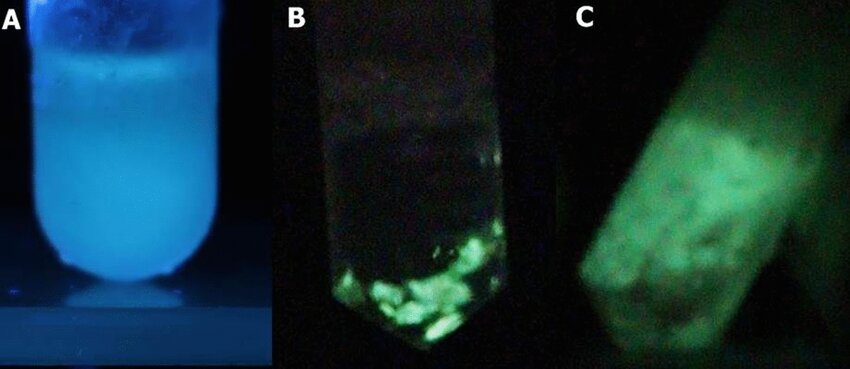
Phosphorescence and fluorescence of Deltatoria bremleii extracted material upon UV light irradiation: (A) fluorescence; (B) phosphorescence of pelleted material and debris after UV light irradiation; (C) phosphorescence of frozen supernatant. Viviani, Vadim. (2023). Biophosphorescence in fluorescent millipedes (Diplopoda: Xystodesmidae) and its relationships with bioluminescence. Scientific Reports. 13. 10.1038/s41598-023-47860-9.
3. Phosphorescence Emission Mechanism
Phosphorescence occurs when a material absorbs energy and then emits light over a prolonged period. This emission is different from fluorescence, which happens almost instantaneously. The key feature of phosphorescence is the delayed release of light due to the process of electron transition between energy states, specifically through what is known as a "forbidden transition."
In phosphorescent materials, the electron is first excited to a higher energy level when the material absorbs light. However, rather than immediately returning to its ground state (as in fluorescence), the electron undergoes a slower transition due to quantum mechanical restrictions. This slower return to the ground state results in the prolonged emission of light after the excitation source is removed.
Types of Phosphorescence Emission:
-
Single Phosphorescence Emission: This is the most common and straightforward form of phosphorescence. The material absorbs energy and then emits light at a single wavelength after a delay. The duration of the emitted light is determined by the material's specific energy states and the transition times.
-
Fluorescence-Phosphorescence Dual Emission: Some materials exhibit both fluorescence and phosphorescence. In this case, the material first emits light almost instantaneously (fluorescence), followed by a delayed emission (phosphorescence). This dual emission can result from the material having both singlet and triplet excited states. The material's ability to exhibit both types of emission can be beneficial for applications like displays, where quick response times are needed alongside long-lasting afterglow effects.
-
Dual Phosphorescence Emission: This phenomenon occurs in certain advanced materials, where the material can emit two different phosphorescent emissions at different wavelengths. This can happen due to the material having multiple triplet excited states that lead to different light emission outcomes. Dual phosphorescence is useful in applications that require multiple colors or enhanced light control, such as in multi-color displays or specialized lighting systems.
The rate of phosphorescence emission can also depend on external factors such as temperature and the material's purity. At higher temperatures, the electron transition may occur more rapidly, shortening the duration of the afterglow. Impurities in the material can disrupt the process and alter the light emission, affecting the efficiency and longevity of the glow.
Understanding these various emission behaviors helps explain the wide range of applications of phosphorescent materials, from simple glow-in-the-dark products to complex, multi-functional technologies.

Emission mechanisms for (A) single phosphorescence emission, (B) fluorescence‐phosphorescence dual emission, and (C) dual phosphorescence emission. Ruan, Zhipeng & Yang, Jun & Li, Yonghua & Zhang, Kenneth. (2024). Dual‐Emissive Iridium(III) Complexes and Their Applications in Biological Sensing and Imaging. ChemBioChem. 25. e202400094. 10.1002/cbic.202400094.
4. Phosphorescent Decay Characteristics
Phosphorescent materials exhibit a characteristic decay time, which is the period the material continues to glow after the excitation source has been removed. This afterglow can last from a few seconds to several hours, depending on the material and conditions.
Different materials have different decay times, and these times can be affected by environmental factors like temperature. At higher temperatures, electrons can return to the ground state more quickly, shortening the decay time. The purity of the material also plays a role—impurities within the material can interfere with the energy transfer process, thereby altering the light emission duration.
5. Types of Phosphorescent Materials
Phosphorescent materials come in many forms, each with distinct properties and uses.
-
Inorganic Phosphorescent Materials: These include compounds such as alumino-silicates, yttrium aluminum garnet (YAG), and other rare-earth-doped materials. These materials are commonly used in blue and white light-emitting applications and are known for their stability and brightness.
-
Organic Phosphorescent Materials: Organic molecules have become increasingly popular in applications like OLED displays and organic lighting. These materials offer the advantage of being more flexible and efficient in terms of energy consumption, making them ideal for consumer electronics.
-
Rare-Earth Element Doped Materials: Doping phosphorescent materials with rare-earth elements like europium or terbium enhances the emission properties of the materials, allowing for more precise control over light color and improving the efficiency of phosphorescence.
Ytterbium-doped Yttrium Aluminium Garnet (Yb:YAG)
6. Applications of Phosphorescent Materials
The use of phosphorescent materials is widespread, with numerous applications in modern technology:
-
Display Technologies: Phosphorescent materials play a key role in OLED (Organic light-emitting diode) displays, which are used in a variety of electronic devices, including televisions, smartphones, and wearables. These materials allow for vibrant colors and high energy efficiency.
-
Lighting: Phosphorescent materials are used in energy-efficient lighting solutions, including phosphorescent lamps and light panels. These materials are also used in emergency lighting systems to ensure visibility in low-light environments.
-
Safety Signage and Environmental Applications: Phosphorescent materials are crucial in safety systems, where they are used for signs, exit lights, and emergency indicators. These materials glow in the dark, providing vital guidance in power outages or other low-visibility situations.
-
Art and Decoration: Phosphorescent materials are also used in various artistic and decorative applications, adding a glowing effect to paintings, sculptures, and interior designs. Their ability to absorb light during the day and glow in the dark creates striking visual effects.
7. Conclusion
Phosphorescent materials are a key part of modern technology, with applications spanning from everyday consumer electronics to specialized safety equipment. Their ability to absorb energy and emit light over a prolonged period makes them valuable in both practical and aesthetic contexts. As research continues into new materials and improved methods of production, the range of applications for phosphorescence will continue to expand. Whether in cutting-edge display technologies, energy-efficient lighting, or ensuring safety in low-light environments, phosphorescent materials will remain an essential part of the technological landscape.
Stanford Optics provides high-quality phosphorescent materials, designed for vibrant and efficient light emission in advanced optical and display systems.

